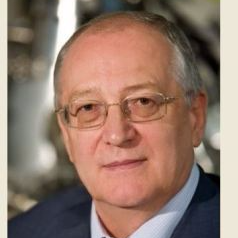Sensors Based on Piezoelectrics
A special issue of Sensors (ISSN 1424-8220). This special issue belongs to the section "Electronic Sensors".
Deadline for manuscript submissions: closed (10 August 2023) | Viewed by 9370
Special Issue Editor
JSC “Giredmet”, 2 Elektrodnaya Str., Moscow, 111524, Russia.
Interests: physical chemistry and technology of inorganic materials; material science; semiconductors; nanoindustry; crystalline materials; ferroelectrics; ultrasensitive sensors
Special Issue Information
Dear Colleagues,
In the last decade, the development of new technologies has faced the necessity of ultrasensitive accelerometers, magnetic field sensors, IoT applications, biosensors, lab-on-a-chip systems, etc. In this context, piezoelectric-based sensors cover a wide range of applications. Piezoelectric materials offer three main advantages: possibility of passive operation, MEMS and NEMS integration, and broad frequency range. New lead-free ceramics, crystals, and polymer piezoelectric materials demonstrate excellent properties for sensing systems. In addition, cheap and sensitive measurement techniques for piezoelectric-based sensors are of great interest today.
We invite investigators to submit original research articles and reviews on sensors based on piezoelectrics. This Special Issue aims to present recent developments in sensors based on piezoelectrics, cheap and sensitive measurement techniques for them, and discuss the current stage of development in this area.
Prof. Dr. Yuriy N. Parkhomenko
Guest Editor
Manuscript Submission Information
Manuscripts should be submitted online at www.mdpi.com by registering and logging in to this website. Once you are registered, click here to go to the submission form. Manuscripts can be submitted until the deadline. All submissions that pass pre-check are peer-reviewed. Accepted papers will be published continuously in the journal (as soon as accepted) and will be listed together on the special issue website. Research articles, review articles as well as short communications are invited. For planned papers, a title and short abstract (about 100 words) can be sent to the Editorial Office for announcement on this website.
Submitted manuscripts should not have been published previously, nor be under consideration for publication elsewhere (except conference proceedings papers). All manuscripts are thoroughly refereed through a single-blind peer-review process. A guide for authors and other relevant information for submission of manuscripts is available on the Instructions for Authors page. Sensors is an international peer-reviewed open access semimonthly journal published by MDPI.
Please visit the Instructions for Authors page before submitting a manuscript. The Article Processing Charge (APC) for publication in this open access journal is 2600 CHF (Swiss Francs). Submitted papers should be well formatted and use good English. Authors may use MDPI's English editing service prior to publication or during author revisions.
Keywords
- piezoelectrics
- sensors
- ferroelectrics
- magnetoelectric sensors
- accelerometers
- magnetic field sensors
- IoT
- biosensors
- lab-on-chip
- ceramics
- crystals
- polymers
- sensitive measurement techniques






